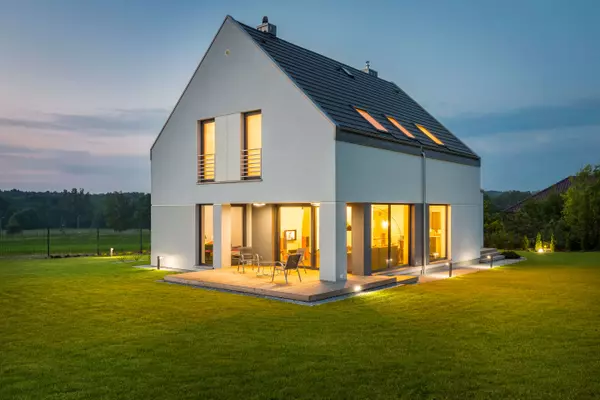Iowa Is Winning in Affordability and Homebuilding: Can Gov. Reynolds Keep It Growing Before Leaving Office?
Iowa remains one of the Midwest’s most affordable and balanced housing markets.
The state earned an A- on Realtor.com® State-by-State Housing Report Card, part of the Let America Build campaign that evaluates how well states manage affordability and new construction.
While Iowa's success should be celebrated, much of the rest of the country is struggling to keep pace. Hoping to spur on action, President Donald Trump recently put pressure on large homebuilders to increase construction nationwide. In a post on his Truth Social platform in early October, he accused major builders of hoarding lots to prop up prices — likening them to OPEC, which restricts oil output to maintain high prices.
“They’re my friends … but now, they can get Financing, and they have to start building Homes. They’re sitting on 2 Million empty lots, A RECORD,” Trump wrote. He urged Fannie Mae and Freddie Mac to intervene and “get Big Homebuilders going” in order to “restore the American Dream.”
So, how is Iowa staying ahead of the curve when so many other states are falling behind?
A strong balance between price and supply
Iowa scored 71.6 overall, placing it among the nation’s top performers for both affordability and new construction. The state’s median listing price of $294,600 in 2024 remains well below the national average, while the median household income of $73,122 gives buyers a solid footing in the market. The Realtor Affordability Score came in at 0.92, one of the highest in the country and a clear sign that Iowa families can still find homes within reach.
The construction outlook is just as encouraging. Iowa accounted for 0.8% of all new home permits in 2024, roughly matching its share of the U.S. population. That results in a healthy permit-to-population ratio, indicating that builders are keeping up with demand.
The new construction premium—the price gap between new and existing homes—was 58.4%, well above many neighboring states, suggesting that newly built homes remain competitively priced for local buyers.
Regional strength and national context
The most recent Realtor.com New Construction Insights report shows that the Midwest continues to benefit from its affordability advantage and reliable supply of new homes. Nationally, the median listing price for newly built homes stood at $450,797, virtually unchanged from the year before, while resale prices increased 2.4%. That brought the national new construction premium down to 7.8%, the lowest in the dataset’s history.
Iowa fits that regional profile perfectly. Builders across the state—from Des Moines to Cedar Rapids to the Quad Cities—have maintained steady activity without overheating the market. Ample land, predictable zoning, and reasonable construction costs have all contributed to keeping new homes attainable. By contrast, coastal and western states continue to grapple with restrictive building rules and high development costs that drive up prices and limit supply.
Clearly, there is work still to be done.
“America is short more than 4.7 million homes, and every new home built helps close that gap while fueling local economies," says Shannon McGahn, executive vice president and chief advocacy officer at the National Association of Realtors®.
"NAR research shows that the U.S. has faced a persistent housing shortage for more than a decade, driving up prices and limiting options for buyers. Expanding housing supply creates jobs, supports small businesses, and affords families the opportunity to build generational wealth.”
Governor Reynolds invests in attainable housing
According to the Iowa Finance Authority, more than 21,000 additional homes will be needed in Iowa by 2030.
Gov. Kim Reynolds has attempted to meet that need in several ways.
In 2024, Reynolds and the Iowa Economic Development Authority (IEDA) announced more than $37 million in workforce housing tax credits to support housing development across the state. The awards will fund 62 housing projects expected to create more than 2,000 residential units.
“As we grow our state, our housing supply needs to keep up with demand,” Reynolds said. “Iowans who live near their jobs often become more invested in their communities, and that both strengthens local economies and attracts new residents.”
Meanwhile, Senate File 592, which Reynolds signed into law in May 2025, requires cities and counties to allow at least one accessory dwelling unit (ADU) on single-family lots. The legislation, which took effect July 1, establishes minimum standards for ADUs and prohibits overly restrictive local regulations.
However, beyond that legislation, Reynolds’ approach to housing has been more focused on property tax reform. She and Republican lawmakers plan to craft new legislation aimed at lowering property taxes in 2026. Reynolds, who is not seeking reelection next year, has said the proposal would mark the culmination of her years-long effort with the Republican-controlled legislature to reduce taxes.
This article was produced with editorial input from Dina Sartore-Bodo and Gabriella Iannetta.
Categories
Recent Posts










GET MORE INFORMATION

Stevan Stanisic
Real Estate Advisor | License ID: SL3518131
Real Estate Advisor License ID: SL3518131
